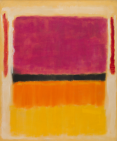Abstract
The love described by Thomas d'Angleterre in Tristan and by Chrétien de Troyes in Cligés is conceived in different terms than the conventional model of fin'amor put forward by the troubadours; both authors treat the phase of their protagonists' falling in love as a true and proper disease whose symptoms can easily be mistaken for those of any medical condition such as sea-sickness. The two romances differ, however, in their rendering of the affective states and the somatic reactions that correspond to each of those states of the individual. A comparison of the relevant passages shows how the pathology of love brings about individual emotive characteristics and physical manifestations. This understanding of love as a disease is rooted in the literary tradition going back to Ovid, but the two authors reinterpret it in distinctive ways and leave it to their protagonists' own choice to seek healing.
Except where otherwise noted, the content of this site is licensed under a Creative Commons Attribution-ShareAlike 4.0 International (CC BY-SA 4.0).
Authors retain copyright of their work. The CC BY-SA 4.0 licence allows readers to copy and redistribute the material in any medium or format, and to remix, transform, and build upon the material for any purpose, even commercially, as long as the original author is credited and as long as any works that are derived from the original are distributed under the same terms.

